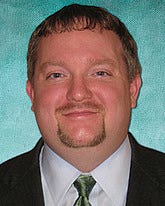FM Approval Changes Affect New I.S. Equipment
December 2, 2011
|
Steve Wise |
Starting January 1, 2012 new installations of Factory Mutual (FM) approved intrinsically safe equipment into Division 1 hazardous areas must meet the FM3610:2010 approval standard. While existing installed equipment is not affected by this change, any new equipment to be installed in explosive atmospheres must meet this new more stringent standard in order to retain its FM approval status. A good question to ask when purchasing new FM-approved hazardous area equipment is, “Has this item been approved to the updated FM approval standard FM3610:2010?”
It is of paramount importance that electrical equipment installed in areas with explosive atmospheres has been designed to operate safely in that environment. Intrinsically safe design is one popular method for creating safe electrical products. In article 504 of the National Electrical Code Handbook intrinsically safe circuits are defined as “a circuit in which any spark or thermal effect is incapable of causing ignition of a mixture of flammable or combustible material in air under prescribed test conditions.”
In other words, the circuit is designed to have so little energy it is incapable of producing a spark, even under abnormal or fault conditions. In order to design an intrinsically safe product, engineers must make sure every single circuit in the system is intrinsically safe.
Once the product is ready, it is sent to an independent nationally recognized testing laboratory (NRTL) to verify and validate the design is safe. In North America, Factory Mutual is the NRTL often used to test and verify compliance with U.S. standards for electrical products intended for use in potentially explosive (hazardous) areas. From this testing, FM will provide certification to the manufacturer that the design complies with the standard’s requirements.
In 2010, Factory Mutual published its new revised standard, FM3610:2010, which provides requirements for the construction of electrical apparatus for use in Class I, II, and III, Division 1 hazardous classified areas as defined in Article 500 of the National Electrical Code, ANSI/NFPA 70.
The FM standards are revised periodically in order to remain up to date with technology, national standards, and international standards. In a move toward a global harmonization of standards, this revision was also designed to adopt the International Society of Automation (ISA) standards and to harmonize with the IEC 60079 series of standards. Some major updates include:
Increase of safety factor for ignition-capability
More rigorous method of applying component potential fault analysis
Change to the temperature rise and ignition energy tests for battery powered equipment
Certain limitations on series semiconductor devices used as current limiting devices
Certain limitations on use of plastic and magnesium alloy enclosures
Additional requirement of a cable pull test for products with permanently connected cables
The result is that many devices will need to be redesigned in order to meet the new requirements. And beginning in 2012, all new installations of FM-approved intrinsically safe equipment must use products that have been certified to comply with this new standard.
It is important to note that FM-approved equipment that is already installed does not have to be retested to meet this new standard. Existing, installed products with an FM marking can continue to be used and repaired. However, accessories such as external AC power supplies and battery packs with an FM marking must also be re-evaluated to the FM3610:2010 standard if they are manufactured after January 1, 2012.
It is the manufacturer’s responsibility to make sure its products are safe and are compliant with the appropriate standards. However, as a consumer of these devices, it is also important to be aware of what standards are applicable and what questions to ask when purchasing hazardous area equipment.
Steve Wise is the North American market manager for the chemical and pharmaceutical segments at Mettler-Toledo Inc., a global manufacturer and marketer of precision instruments for use in laboratories, manufacturing, and food retailing.
About the Author(s)
You May Also Like




